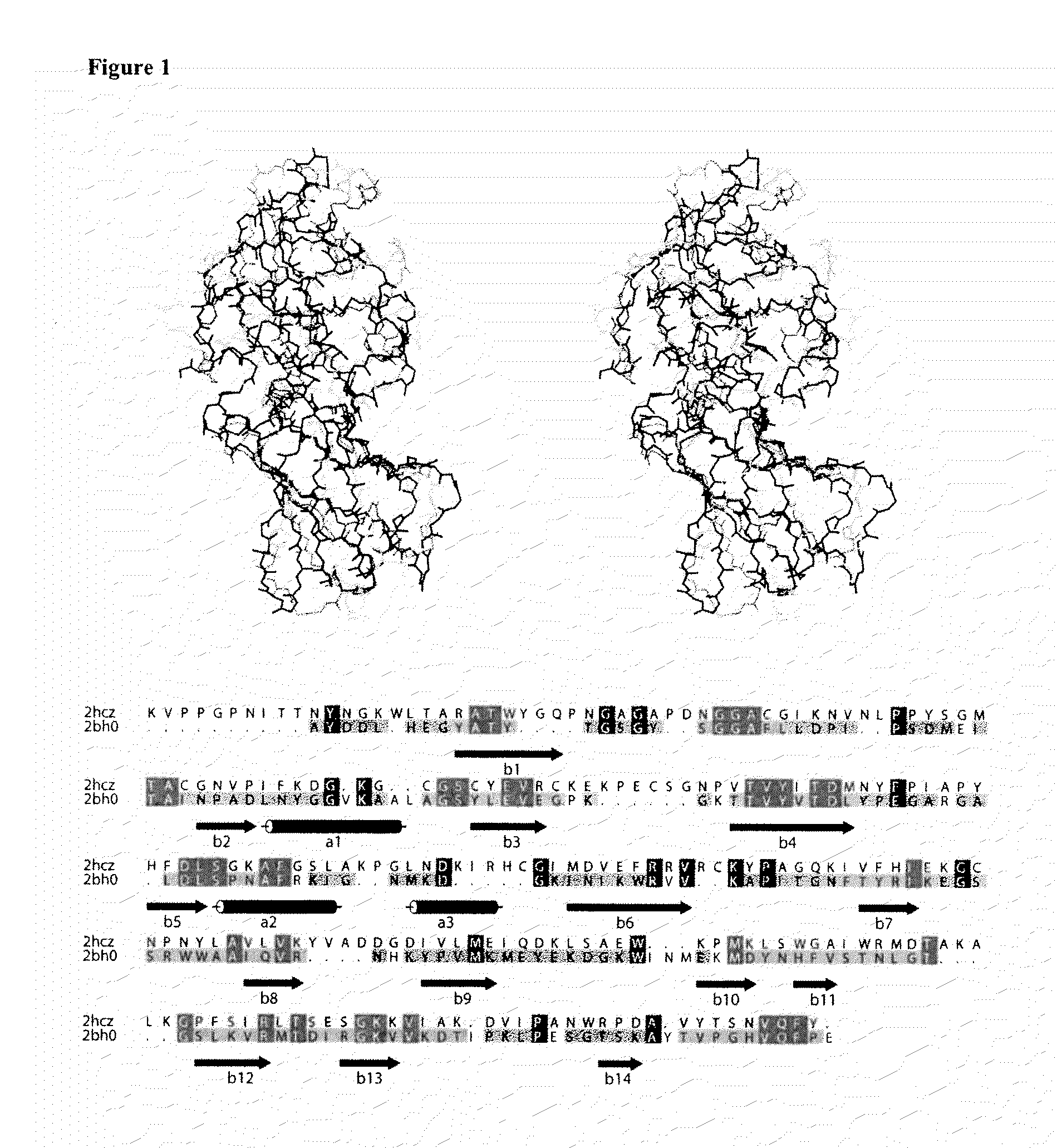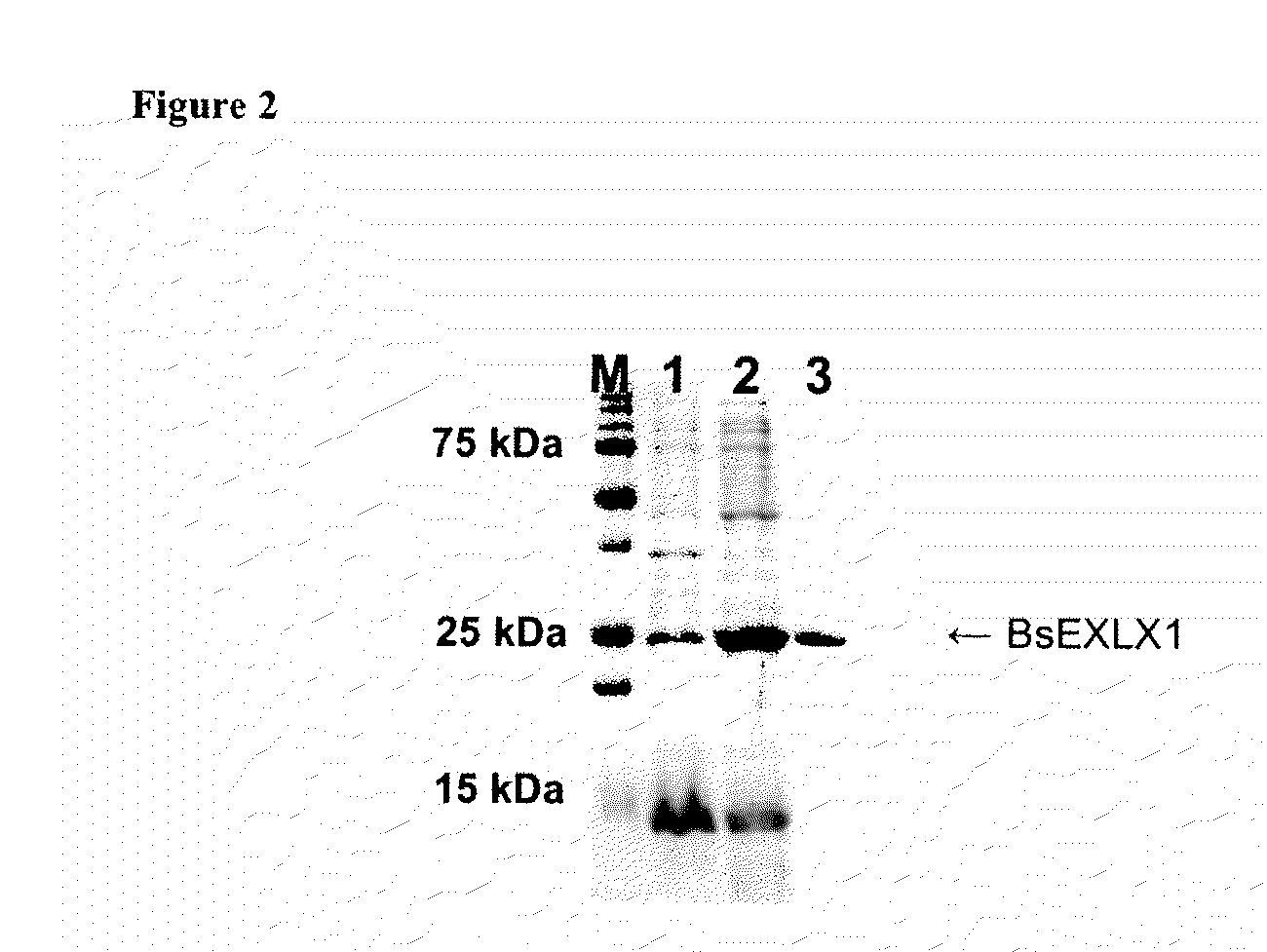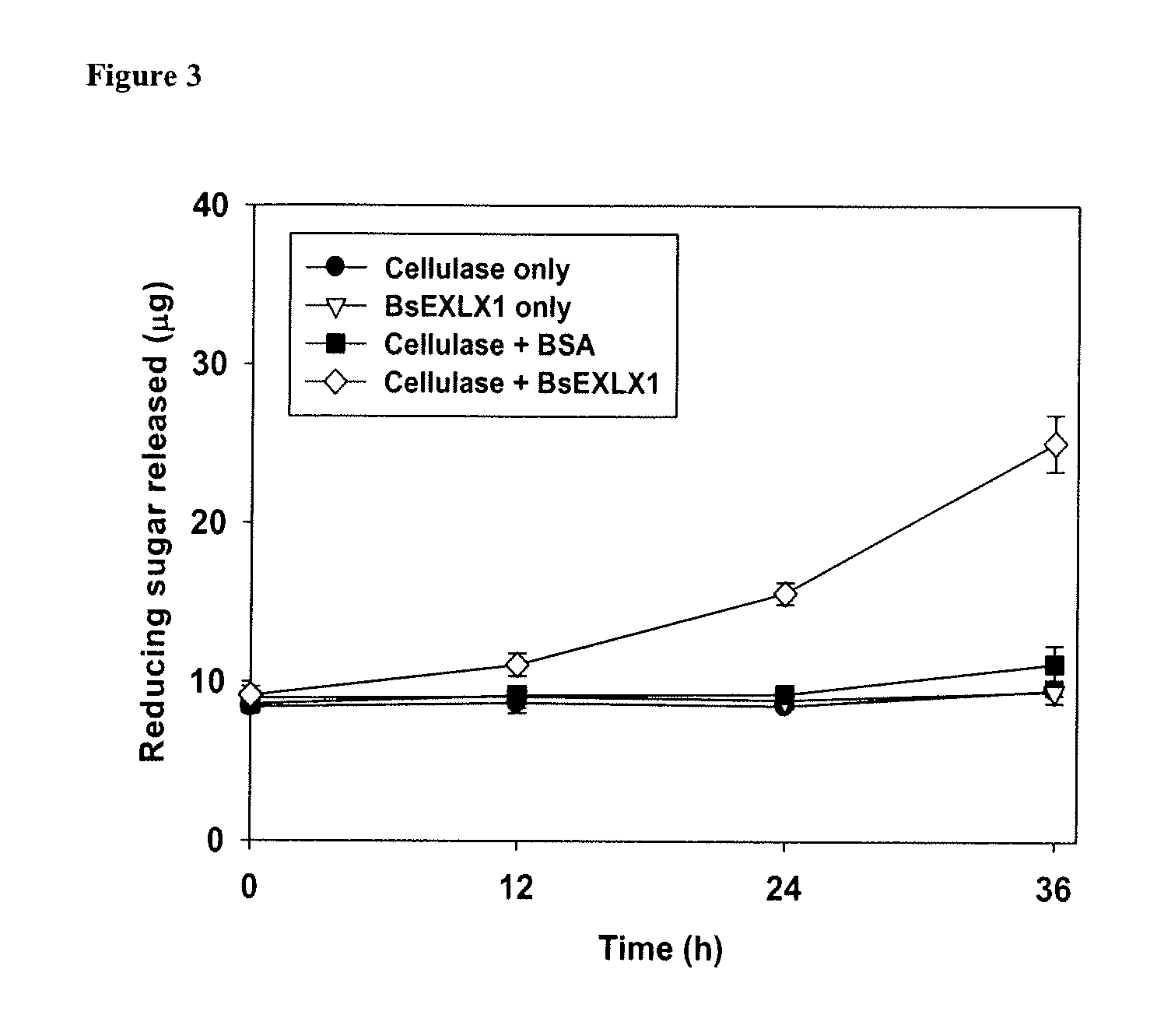Prokaryotic expansin protein activating cellulose expansion and cellulose - degrading composition comprising the same
a technology of cellulose expansion and prokaryotic expansin, which is applied in the direction of bacteria peptides, peptide sources, peptide sources, etc., can solve the problems of high cost of cellulase enzymes, and failure to overexpression heterologous intact plant expansins as active recombinant proteins, etc., to achieve the effect of maximum hydrolysis yield and higher dependency of bsexlx1
- Summary
- Abstract
- Description
- Claims
- Application Information
AI Technical Summary
Benefits of technology
Problems solved by technology
Method used
Image
Examples
example 1
Bioinformatics Tools
[0073]A structural homolog search was performed against the PDB using the DaliLite program (Holm and Park 2000). To find expansin homologs in bacteria, we employed as a template the known structure of Zea m 1, which is a subset of β-expansins found in all groups of land plants (PDB id: 2hcz) (Yennawar et al. 2006). The alignment of the structure pair was done with DaliLite and UCSF chimera (Pettersen et al. 2004), and UCSF chimera was also used to draw the ribbon diagrams of protein structures.
example 2-1
Strains, Vectors, and Cloning
[0074]E. coli strain DH5α was used for plasmid cloning and amplification of the target gene, and E. coli strain BL21 (DE3) was used for expression of the cloned gene. The strains were grown at 37° C. with Luria-Bertani (LB) media (Difco, Sparks, Md., USA), and 50 μg / mL of ampicilin (Sigma, St. Louis, Mo., USA) was added for selecting transformants. The target gene was obtained by PCR amplification using the genomic DNA of B. subtilis as a template. The genomic DNA of B. subtilis was kindly provided by Berkeley Structural Genomics Center (BSGC, Berkeley, Calif., USA). The primer sequences for PCR reaction were BsEXLX1N (5′-GAAGGAGATATAAGGATGGCATATGACGACCTGCATGAA-3′, SEQ ID NO: 49) and BsEXLX1C (5′-ATGATGGTAATGGTGTTCAGGAAACTGAACATGGCC-3′, SEQ ID NO: 50), which were designed to remove a potential signal sequence in the amino-terminus of the target protein. The PCR primers were synthesized by IDT (Coralville, Iowa, USA). The PCR product was directly cloned i...
example 2-2
Strains, Vectors, and Cloning
[0078]E. coli strain DH5α was used for plasmid cloning and amplification of the target gene, and E. coli strain BL21 (DE3) was used for expression of the cloned gene. The strains were grown on LB media at 37° C. (Difco, Sparks, Md., USA), and 50 mg / mL of ampicilin (Sigma, St. Louis, Mo., USA) was added for selecting transformants. The target gene was obtained by PCR amplification using the genomic DNA of S. aurantica as a template. The genomic DNA of S. aurantica was kindly provided by Berkeley Structural Genomics Center (BSGC, Berkeley, Calif., USA). The primer sequences for PCR reaction were St EXLX1N and StEXLX1C (5′-CTTTTTCAGGCTAAACTGCTCAGCACCATCG-3′, SEQ ID NO: 51), which were designed to remove a potential expression inhibition sequence, in the amino-terminus of the target protein. The PCR primers were synthesized by IDT (Coralville, Iowa, USA). The PCR product was directly cloned into an expression vector by the ligation independent cloning (LIC) ...
PUM
| Property | Measurement | Unit |
|---|---|---|
| pH | aaaaa | aaaaa |
| pH | aaaaa | aaaaa |
| pH | aaaaa | aaaaa |
Abstract
Description
Claims
Application Information
 Login to View More
Login to View More - R&D
- Intellectual Property
- Life Sciences
- Materials
- Tech Scout
- Unparalleled Data Quality
- Higher Quality Content
- 60% Fewer Hallucinations
Browse by: Latest US Patents, China's latest patents, Technical Efficacy Thesaurus, Application Domain, Technology Topic, Popular Technical Reports.
© 2025 PatSnap. All rights reserved.Legal|Privacy policy|Modern Slavery Act Transparency Statement|Sitemap|About US| Contact US: help@patsnap.com



